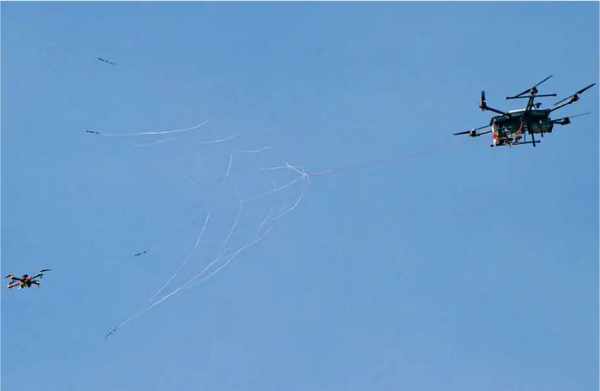Fortem Technologies has modified its F700 C-UAS system to reflect the need to engage and defeat the larger, faster drones in routine use by Russian forces, including the Orlan-10 and Shahed-136.
Operating autonomously, the radar-guided system uses a net-based capture system (NetGun) to intercept hostile drones, preserving them for forensic and intelligence analysis if required – or even for re-use as a friendly asset. According to the manufacturer, only about 15% of drones successfully evade capture at the first attempt – though no specific claims have been made with regard to multiple and/or swarm targets. However, multiple DroneHunter F700 units deployed in multiple proximate locations can assist in defeating swarm attacks, the company states. Furthermore, the system can be adapted to serve as a supplemental layer in an anti-aircraft defence systems, particularly against loitering munitions and fast, low-altitude drones such as the Russian Lancet-3.
A distinguishing feature has been the system’s adaptability, handling threats from most Class I and Class II drones. It differs from most of its competitors in that it has been designed for the C-UAS mission from the original concept, rather than being a modification of an existing airframe. The manufacturer claims it is faster, longer-legged and more agile than the majority of competing systems.
For more information
(Image: The DroneHunter F700 uses the NetGun capture system to enable intact capture of hostile drones. Credit: Fortem Technologies)




